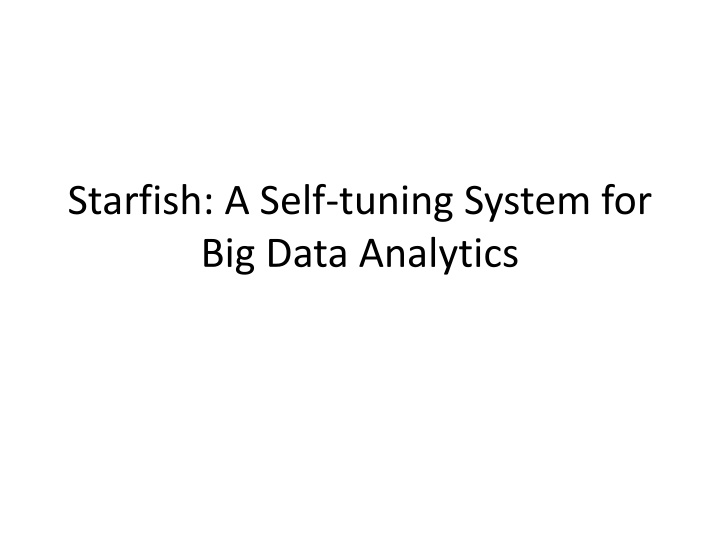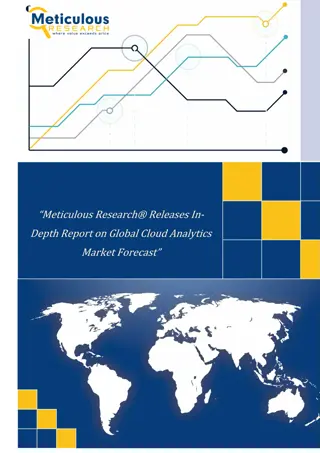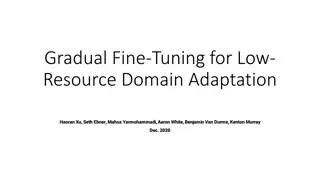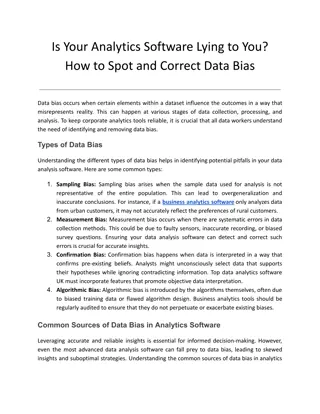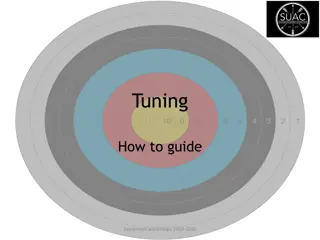Starfish: A Self-Tuning System for Big Data Analytics
Starfish is an automated system designed to provide optimal configurations for workloads, workflows, and MapReduce jobs in the evolving Hadoop ecosystem. Its architecture includes components such as the Elastisizer, Workload Optimizer, What-if Engine, and more, aiming to streamline the process of job-level tuning and enhance overall performance.
Download Presentation

Please find below an Image/Link to download the presentation.
The content on the website is provided AS IS for your information and personal use only. It may not be sold, licensed, or shared on other websites without obtaining consent from the author.If you encounter any issues during the download, it is possible that the publisher has removed the file from their server.
You are allowed to download the files provided on this website for personal or commercial use, subject to the condition that they are used lawfully. All files are the property of their respective owners.
The content on the website is provided AS IS for your information and personal use only. It may not be sold, licensed, or shared on other websites without obtaining consent from the author.
E N D
Presentation Transcript
Starfish: A Self-tuning System for Big Data Analytics
Motivation As the Hadoop ecosystem has evolved, it has become accessible to a wider and less technical audience. E.g., data analysts as opposed to programmers However, creating optimal configurations by hand is entirely infeasible Starfish seeks to automatically provide an optimal configuration given the characteristics of given workloads, workflows, and MapReduce jobs.
Starfish Architecture Given a workload and a set of constraints, the Elastisizer determines an optimal deployment Workload Optimizer transforms submitted workflows to logically equivalent, but optimized, workflows What-if Engine answers hypothetical queries from other Starfish modules Workflow-aware scheduler determines the optimal data layout Just-in-Time Optimizer recommends job configuration parameter values Profiler monitors execution of jobs to generate job profiles Sampler generates approximate job profiles based on brief sample executions
Lastword Lastword is Starfish s language for reasoning about data and workloads Analogous to Microsoft s .NET Not actually used by humans Allows data analysts to write workflows in higher- level language (e.g. Pig, Hive, etc)
Job-Level Tuning In Hadoop, MapReduce jobs are controlled by over 190 configuration parameters No one-size-fits-all configuration. Bad performance often due to poorly-tuned configurations Even rule-of-thumb configurations can result in very bad performance
Job-Level Tuning Just-in-Time Optimizer Automatically selects optimal execution technique when job is submitted Is assisted by information from Profiler and Sampler Profiler Performs dynamic instrumentation using Btrace Generate a job profiles Sampler Collects statistics about input, intermediate, and output data Samples execution of MapReduce jobs Enables Profiler to generate approximate job profiles, without complete execution
Job Profiles Capture information at task- and subtask-level information Map Phase Reading, Map Processing, Spilling, and Merging Reduce Phase Shuffling, Sorting, Reduce Processing, and Writing Expose three views The timings view details how much time is spent in each subtask The data-flow view provides the amount of data processed at each subtask The resource-level view presents usage trends of various resources (i.e., CPU, memory, I/O, and network) over the execution of the subtasks Using data provided through job profiles, optimal configurations can be calculated
Job-Level Tuning % of io.sort.mb dedicated to tracking record boundaries buffer utilization % at which point data begins spilling to disk total amount of buffer memory to use while sorting files, in MB # of streams to merge at once while sorting files default # of reduce tasks per job
Job-Level Tuning total amount of buffer memory to use while sorting files, in MB % of io.sort.mb dedicated to tracking record boundaries
Job-Level Tuning total amount of buffer memory to use while sorting files, in MB % of io.sort.mb dedicated to tracking record boundaries
Job-Level Tuning default # of reduce tasks per job % of io.sort.mb dedicated to tracking record boundaries
Workflow-Level Tuning Unbalanced data layouts can result in dramatically degraded performance Default HDFS replication scheme, in conjunction with data-locality-aware task scheduling can result in overloaded servers
Workflow-Level Tuning Workflow-aware Scheduler coordinates with the What-if Engine to determine optimal data layout the Just-in-Time Optimizer to determine job execution schedule Workflow-aware Scheduler performs cost-based search over the follow space of choices: Block placement policy (default HDFS Local Write, or custom Round-Robin) Replication factor Optimal size of file blocks Whether to compress output or not
Workload-Level Tuning Starfish implements a workload-optimizer Translates workloads submitted to the system to equivalent, but optimized, collections of workflows Optimizes three areas Data-flow sharing Materialization Reorganization
Workload-Level Tuning Starfish Elastisizer Given multiple constraints, provides optimal configuration E.g., complete in a given amount of time while minimizing monetary costs Performs cost-based search over various cluster configurations
Feedback and Discussion People seem to appreciate the transparent nature and cross-layer optimizations How effective might the Sampler be? Is the motivation strong enough? Unbalanced data layout example is a bit contrived Missing analysis of overhead introduced by Starfish Paper leaves out a lot of details
